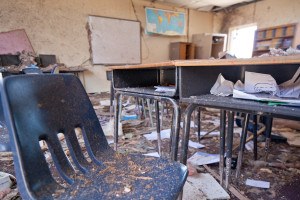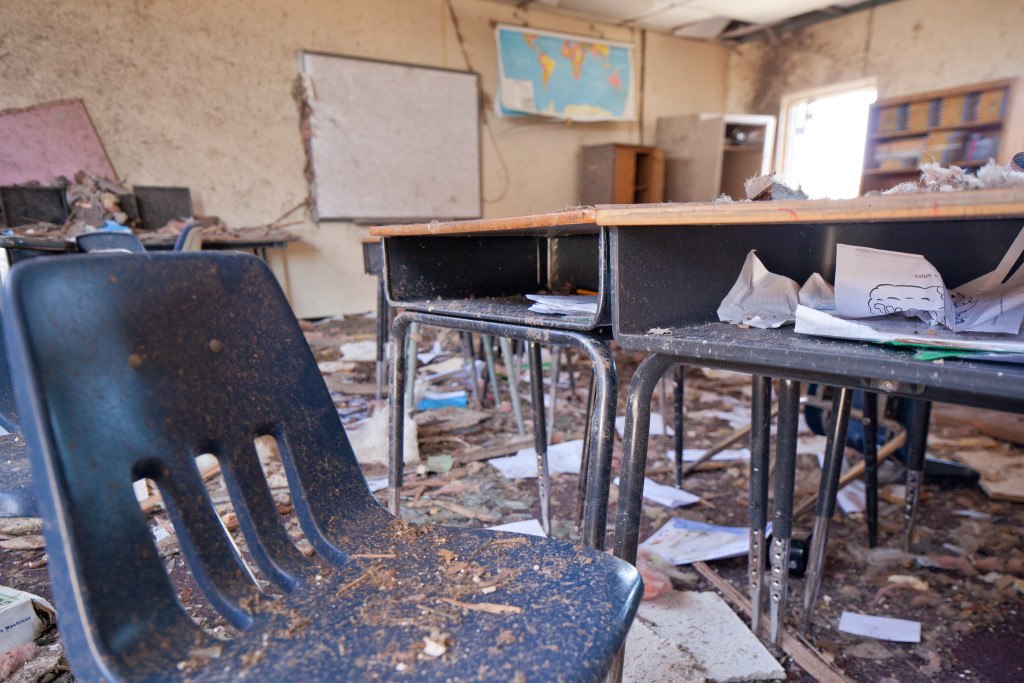Legislative leaders say they won’t demand that Oklahoma’s public schools build storm shelters to protect their students, saying such decisions should be left to local officials.
Two competing tornado shelter plans are being floated as Oklahoma lawmakers prepare to reconvene Monday for the 2014 legislative session. A legislator suggests a $500 million state bond package that local school districts could use to build the shelters, while Gov. Mary Fallin wants to let districts raise the money locally with expanded borrowing authority.
Fallin’s office said Thursday that language outlining her plan had been placed in a House resolution that, if approved by the Legislature and attorney general, would go before voters in November.

The issue emerged after seven children died inside a Moore elementary school when a tornado tore through the Oklahoma City suburb in May. Despite the heightened focus on school safety, Fallin and House and Senate leaders say school construction is typically a function of school boards.
“I believe the state should stay out of telling local school districts to build shelters,” Senate President Pro Tem Brian Bingman, R-Sapulpa, said at an Associated Press pre-session forum at the Capitol on Wednesday.
Bingman and House Speaker Pro Tem Mike Jackson, R-Enid, each said it isn’t the state’s job to mandate how districts do their jobs. They later acknowledged the state does mandate certain academic standards, but that those should be considered separately from other issues.
“Safety is our highest priority,” Jackson said, before saying it’s also important to not impose on local districts. “Of course, I’m going to want my kids to be as safe as they possibly can, but that being said, I also don’t want to mandate in certain instances that they have to do certain things.”
He said the state should intervene only if necessary.
“We can discuss the possibility of set-aside and allowing maybe schools that can’t afford it. We can have that discussion, too, to allow them to maybe tap into some state funding,” he said. “That being said, that should be the decision that local parents and local entities make themselves.”
Bingman said academic standards – such as a new requirement that third-graders reach reading benchmarks before entering fourth grade – are intended to “raise the bar” and ensure Oklahoma children are successful. Construction matters are rightfully discussed locally, he said.
“Yes, we’re guilty at times of passing mandates on certain things,” Bingman said, but equating test scores to storm shelters isn’t fair.
Attempting to raise money locally is a gamble, as school district patrons would have to vote to increase their taxes to protect children from a rare occurrence. Tornadoes in Oklahoma typically strike after school hours, and last year’s deaths were the first in an Oklahoma school since four pupils were killed in a November 1930 twister at Bethany, west of Oklahoma City.
Fallin said a statewide assessment of school facilities conducted after the Moore tornado found that more than a quarter of schools already have shelters or some type of safe room. If a district already has a safe room, it can add other safety features such as bulletproof glass or metal detectors under her plan, if voters approve.
Rep. Joe Dorman, D-Rush Springs, said the money raised under his plan could be paired with federal money to aid more districts. Fallin said state involvement would upset the tradition of having districts pay for their own buildings, in a year expected to have a tight state budget.
Was this article valuable?
Here are more articles you may enjoy.


 Rare Weather Warning Issued as Strong Gusts Fuel Colorado Wildfire Threats
Rare Weather Warning Issued as Strong Gusts Fuel Colorado Wildfire Threats  Poorer Americans Dropped Federal Flood Insurance When Rates Rose
Poorer Americans Dropped Federal Flood Insurance When Rates Rose  Tesla Drivers Are Buying Escape Tools and Cars to Avoid Getting Trapped Inside
Tesla Drivers Are Buying Escape Tools and Cars to Avoid Getting Trapped Inside  NYT Asks Judge to Dismiss Trump’s ‘Implausible’ Defamation Suit
NYT Asks Judge to Dismiss Trump’s ‘Implausible’ Defamation Suit 